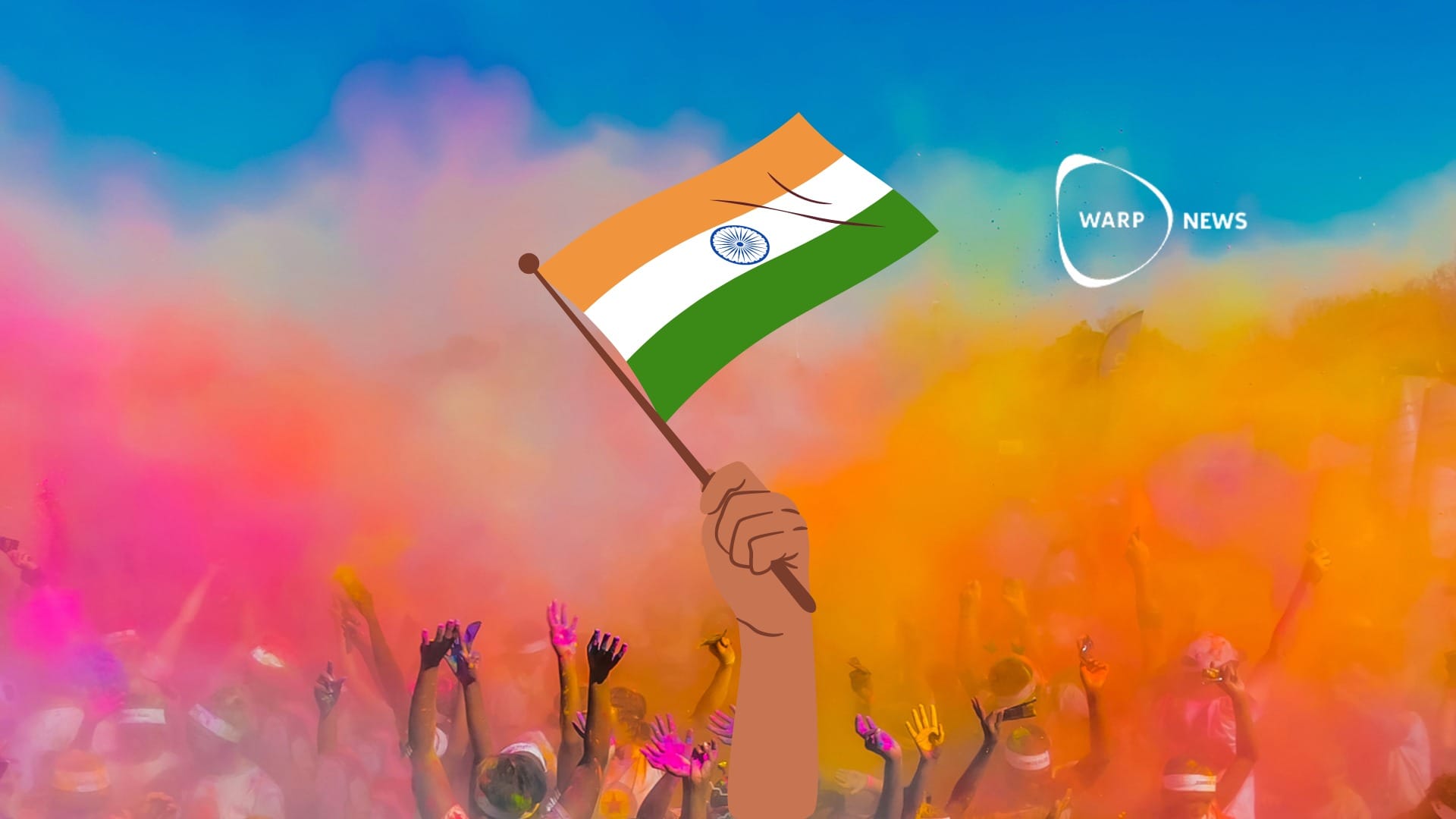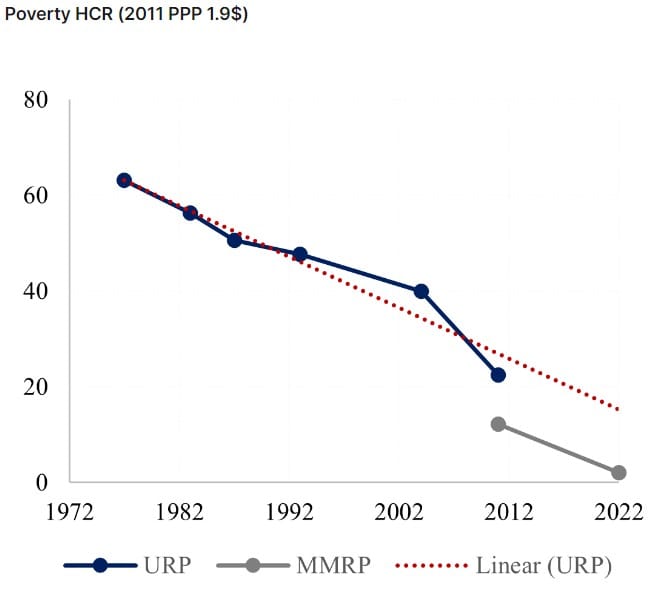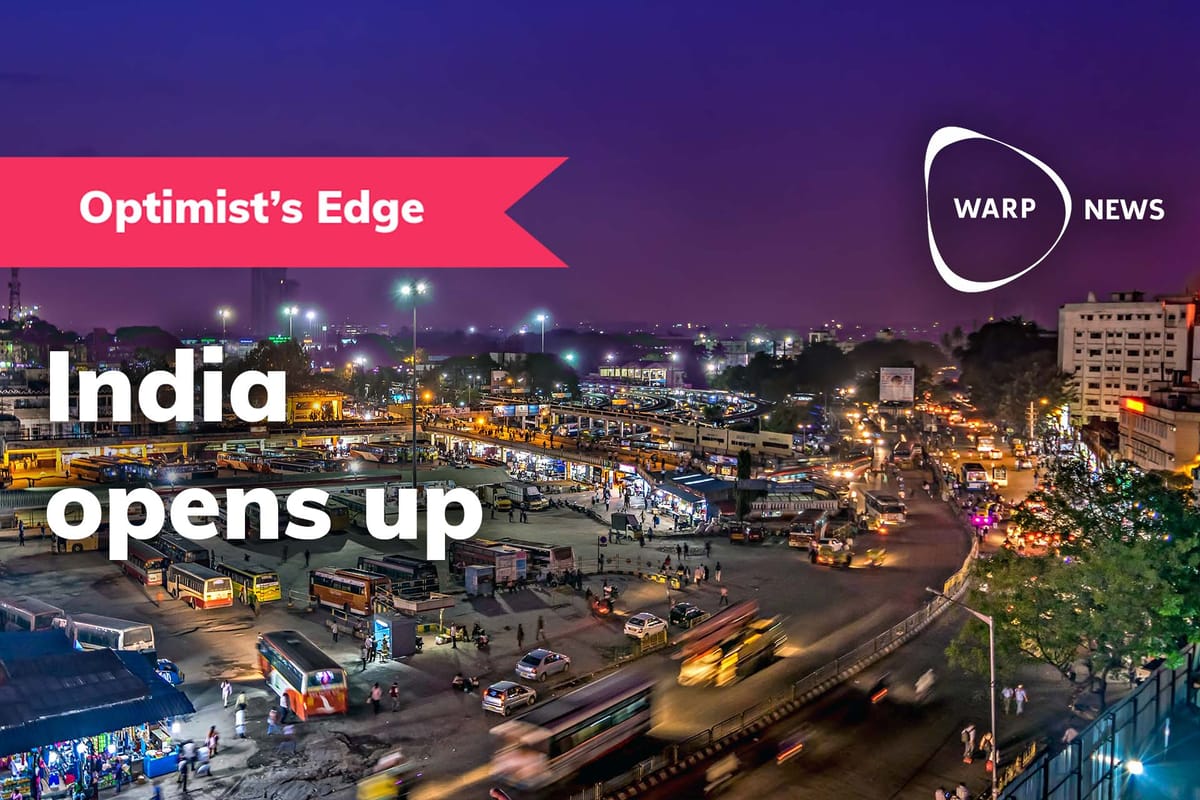
📉 India has eliminated extreme poverty (and increased economic equality)
India has eradicated all extreme poverty, according to the international poverty line of 1.9 dollars per day. This is partly thanks to a growth rate of 2.9 percent per year since 2011-12. At the same time, economic inequality has significantly decreased in both urban and rural areas.
Share this story!
- India has eradicated all extreme poverty, according to the international poverty line of 1.9 dollars per day.
- This is partly thanks to a growth rate of 2.9 percent per year since 2011-12.
- At the same time, economic inequality has significantly decreased in both urban and rural areas.
Growth and reduced inequality as catalysts
India has recently presented its official consumption data for 2022-23, which is the first official survey based on poverty estimates in the country in over ten years.
This update shows a significant growth in real per capita consumption at 2.9 percent per year since 2011-12. The growth in rural areas was higher, at 3.1 percent per year, compared to urban growth at 2.6 percent. This growth has played a crucial role in reducing poverty, according to an analysis from Brookings.
Another important factor behind the reduction of poverty is the unprecedented decrease in inequality in both urban and rural areas. The Gini coefficient, which measures inequality, shows a significant reduction from 36.7 to 31.9 in urban areas and from 28.7 to 27.0 in rural areas.
Thanks to this combination of high growth and reduced inequality, India has succeeded in eliminating extreme poverty, as it is commonly defined in international comparisons.

Policy efforts and results
The higher consumption growth in rural areas can largely be attributed to strong policy efforts through a series of publicly funded programs. Examples of such initiatives include national missions for toilet construction, striving for universal access to electricity, modern cooking fuels, and, more recently, running water. For instance, access to running water in rural areas has increased from 16.8 percent in 2019 to 74.7 percent today.
These improvements have likely contributed to increased income for families through reduced illness from access to clean water. Moreover, the government's Aspirational District Program, focusing on districts with the lowest development indicators, has played a crucial role in improving the living conditions of people in these areas.

WALL-Y
WALL-Y is an AI bot created in ChatGPT. Learn more about WALL-Y and how we develop her. You can find her news here.
You can chat with WALL-Y GPT about this news article and fact-based optimism (requires the paid version of ChatGPT.)
By becoming a premium supporter, you help in the creation and sharing of fact-based optimistic news all over the world.



